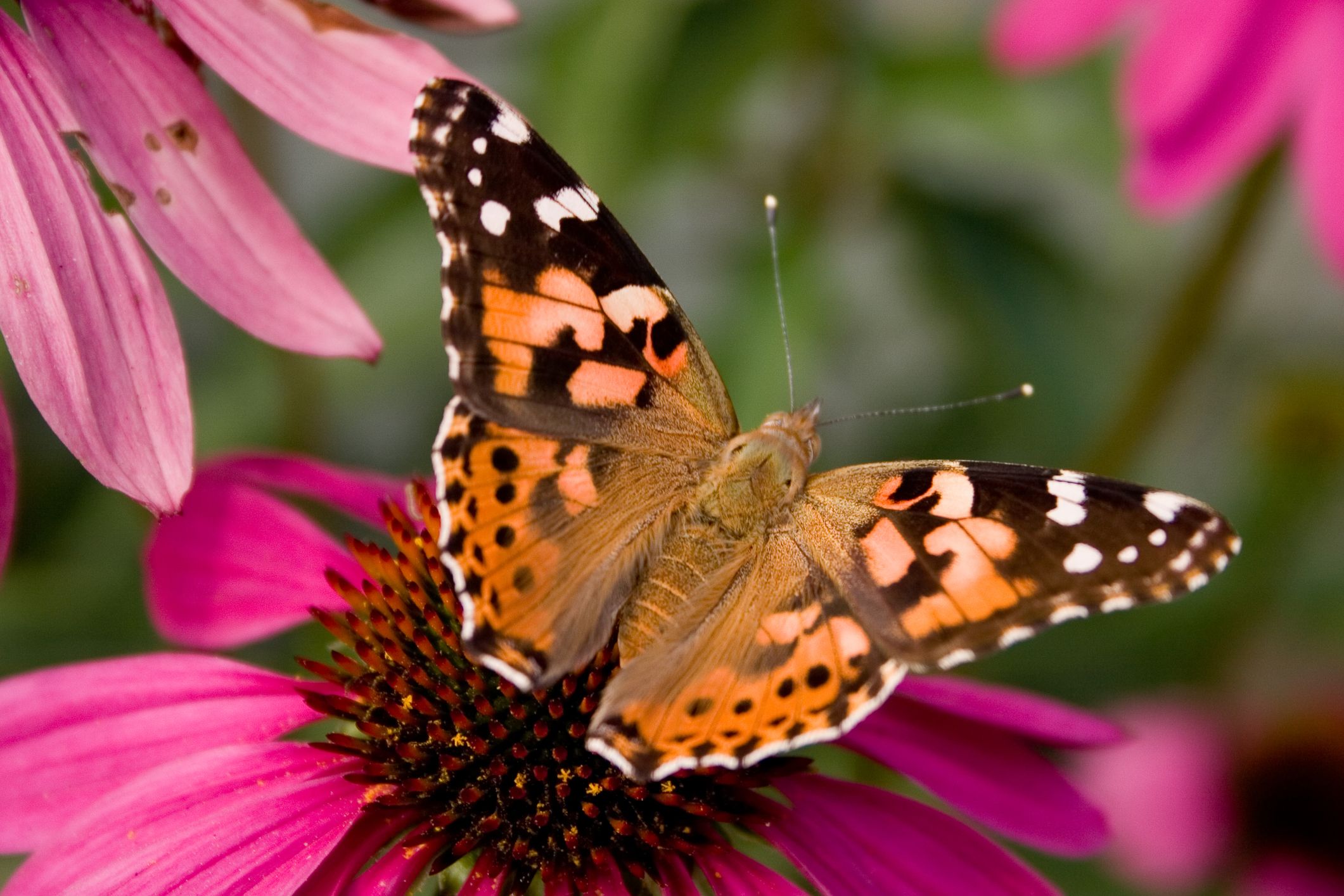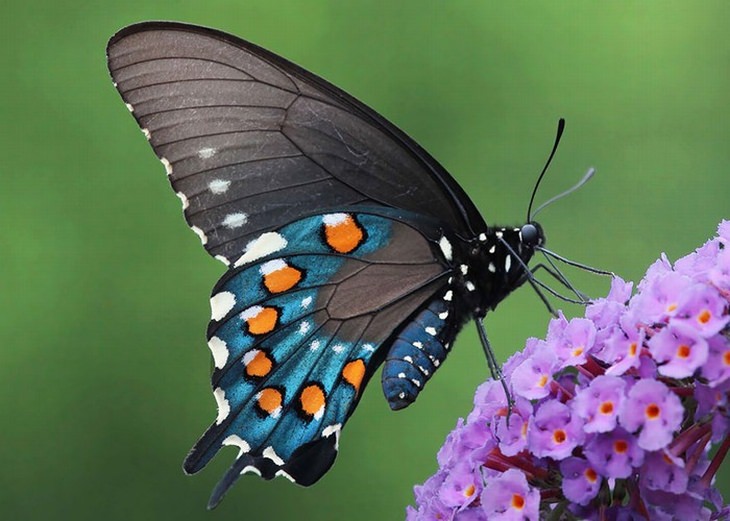What is a Butterfly?
Unlike many other insects, butterflies are widely embraced and celebrated for their beauty and charisma. In addition to their cultural significance and aesthetic charm, they make a very valuable contribution to ecosystems worldwide and are important study animals for ecology, evolution, and conservation biology. All butterflies and moths are insects (Class: Insecta). Insects are the most abundant and diverse group of animals, making up over 58% of the world’s known biodiversity. They can be found living on land, in the air, and underwater – thriving almost everywhere except for the open ocean. Insects are an important part of our ecosystems, and we still have much to learn about them! Butterflies and moths belong to the insect Order Lepidoptera, which is a word that comes from the Greek words for “scale” and “wing.” This is because all the patterns and colours on the wings and bodies of butterflies and moths are made up of tiny coloured scales. Along with their distinctive coiled proboscis (mouthpart) and big showy wings, these features make butterflies and moths different from all other insects. The order Lepidoptera contains an estimated 150,000 described species (mostly moths) and there are an estimated 18,000 described butterfly species found globally. The earliest known butterfly fossils date to the mid Eocene epoch, between 40–50 million years ago.
Where Do Butterflies Live?
Butterflies inhabit diverse environments all over the world, except Antarctica. They are often found in forests, meadows, grasslands, wetlands, and gardens. These vibrant creatures thrive in areas rich in flowering plants, which provide the nectar they feed on. Many butterfly species prefer warm climates, while some can adapt to colder environments. Conservation efforts often focus on protecting butterfly habitats, as they are sensitive to changes in the environment.
Common Types of Butterflies
Monarch Butterfly
.jpg)
Recognizable by its bright orange wings with black veins and white spots.
Painted Lady

Found globally, with orange-brown wings featuring black and white markings.
Swallowtail Butterfly

Large butterflies with distinctive tail-like extensions on their wings.
Blue Morpho

Known for its bright blue iridescent wings, native to South and Central America.
Red Admiral

Dark brown with orange bands, often found in gardens and meadows.
Peacock Butterfly

Striking eye-like spots on its wings to deter predators.
Conclusion
Butterflies are incredible creatures that capture our imaginations with their beauty and role in nature. In addition to their colorful hues and smooth flight, they aid in pollination and inform us of the health of the environment. There are more than 18,000 species on Earth, and butterflies inhabit many various locations, aiding in the balance of ecosystems. When we discover more about what they are like, where they reside, and the various types, we learn more about how unique these fragile insects are and why we must preserve their habitats. It is extremely necessary to engage in conservation to ensure these symbols of transformation and resilience continue to inspire generations to come.